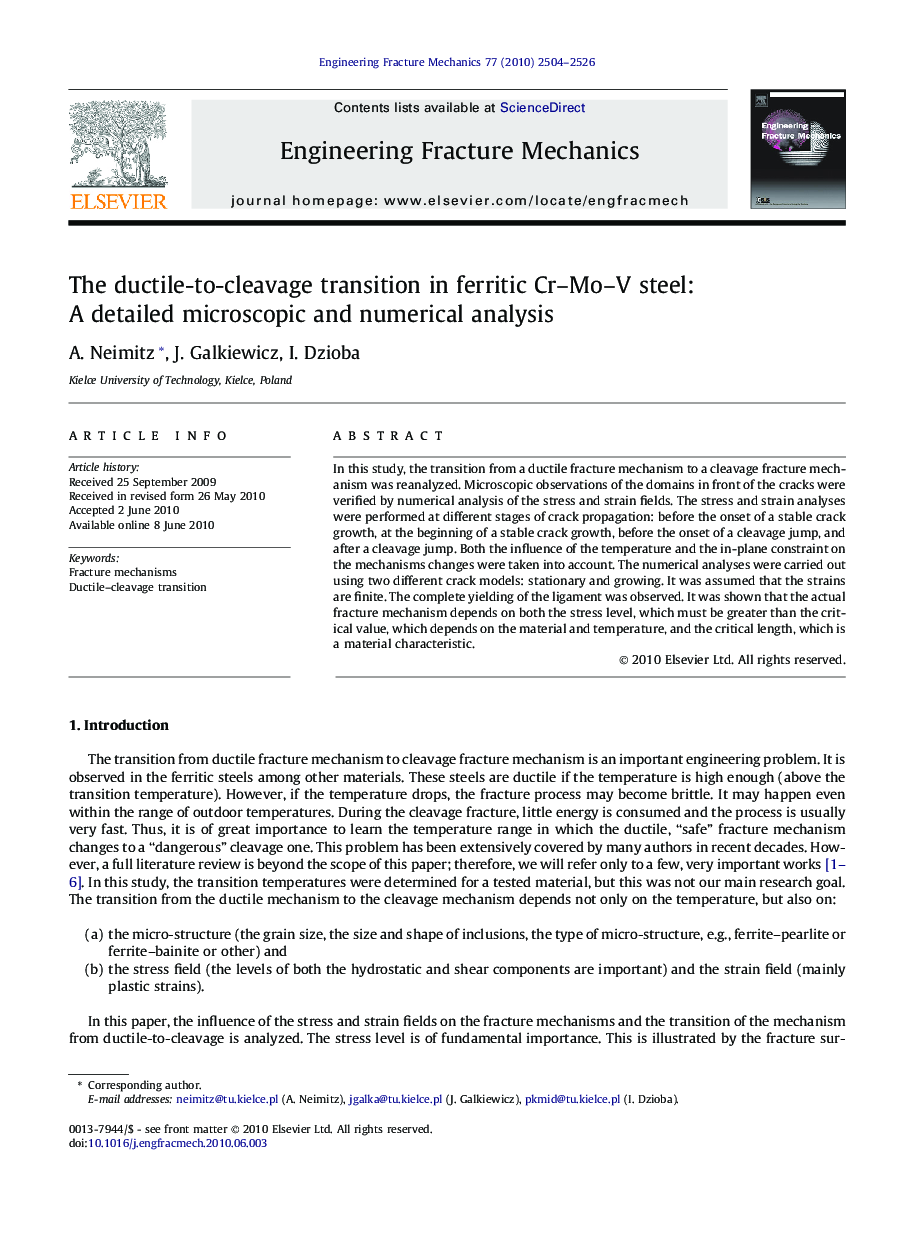| Article ID | Journal | Published Year | Pages | File Type |
|---|---|---|---|---|
| 771038 | Engineering Fracture Mechanics | 2010 | 23 Pages |
In this study, the transition from a ductile fracture mechanism to a cleavage fracture mechanism was reanalyzed. Microscopic observations of the domains in front of the cracks were verified by numerical analysis of the stress and strain fields. The stress and strain analyses were performed at different stages of crack propagation: before the onset of a stable crack growth, at the beginning of a stable crack growth, before the onset of a cleavage jump, and after a cleavage jump. Both the influence of the temperature and the in-plane constraint on the mechanisms changes were taken into account. The numerical analyses were carried out using two different crack models: stationary and growing. It was assumed that the strains are finite. The complete yielding of the ligament was observed. It was shown that the actual fracture mechanism depends on both the stress level, which must be greater than the critical value, which depends on the material and temperature, and the critical length, which is a material characteristic.
